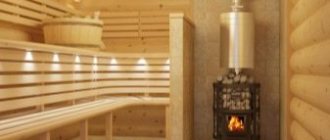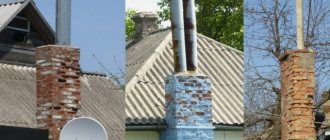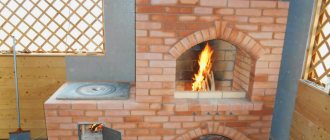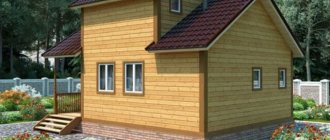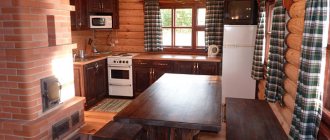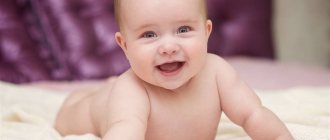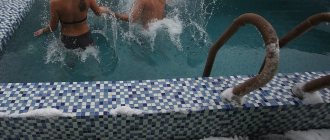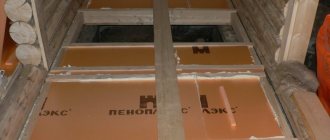Choosing insulation is not the easiest task. Some of them are afraid of getting wet (stone wool), others are difficult to work with (glass wool), and others have not yet found widespread use (foam glass). What remains is polystyrene foam. He is criticized for being unnatural and flammable, but in terms of technical characteristics, he is among the leaders. Moreover, extruded polystyrene foam (EPS), although more expensive, can withstand mechanical loads better than regular foam. One of the manufacturers, Penoplex, produces EPS of various densities and purposes. Its products are quite popular - it is one of the most famous brands in the country.
A little history about Penoplex insulation
A brief history of the emergence of extruded polystyrene foam (the official name of penoplex) is as follows:
- 1941 _ Like many other useful things, the material was originally developed for the needs of the army (in this case, the US Navy). This year, The Dow Chemical company received a patent for a new development, and already in 1942 it established large-scale supplies. The moisture-resistant material with excellent heat-insulating properties was used in the production of boats and life rafts.
- 1952 _ After the war, the Americans continued to use penoplex, its use expanded significantly, first in the refrigeration industry, and then in construction.
- 1963 _ Extruded polystyrene foam has spread throughout Europe and has since occupied a stable niche in the insulation market.
- 1998 _ Extruded polystyrene foam began to be produced in Russia (in the Leningrad region) under the Penoplex trademark and was adequately appreciated by builders.
Extruded polystyrene foam made in Europe
Adhesive selection parameters
Insulation is produced in the form of slabs of various sizes. The scope of application of the material is extremely wide. It is used for thermal insulation of walls, ceilings, floors, as well as for insulation of roofs, facades and even foundations.
Take a closer look at the video:
In order to choose the right way to glue penoplex, you need to take into account several parameters:
frost resistance of the composition is an important characteristic of the adhesive when it comes to outdoor work; the adhesive properties of the composition must correspond to the characteristics of the insulated surface. Cement adhesive for penoplex has the highest adhesion; in rooms where the finishing should also perform a moisture-proof function, it is advisable to use compounds with a waterproofing function
Cement mixtures serve much less in such conditions; Without having the skills to install penoplex, it is also necessary to take into account the rate of hardening of the composition. Polymer materials set in a few seconds; only experienced specialists can work with them; the cost of the adhesive composition is also an important characteristic when choosing. In order to save money, preference can be given to dry mixtures, which are significantly cheaper than a ready-to-use product.
About the production technology of Penoplex insulation
Extruded polystyrene foam (penoplex, XPS) is a related material to ordinary polystyrene foam, commonly known as polystyrene foam. Penoplex is also made from polystyrene granules, but the technological chain has a different form:
- Preparing the mixture . The granules are loaded into a mixer, where they melt under the influence of elevated temperature, and after introducing a foaming agent under pressure, they form the desired homogeneous structure.
- Molding . The foam mixture passes through extruders (forming holes), is cooled and cut into slabs.
- Result . The structure of extruded polystyrene foam forms many small cells filled with air. Due to the fact that the cells are closed, the material acquires the properties of an excellent heat insulator. The color of the slabs is yellow-orange, less often blue.
Production (cutting) of slabs
4 Vapor barrier floor screed
The situation with floors is ambiguous and depends on environmental conditions. So, a screed on a balcony or loggia should be protected with a vapor barrier, but special conditions arise there.
Interfloor ceilings do not need to be protected from the floor side. Several factors have an influence here.
Firstly, the technology of installing foam plastic on the floor itself makes it possible to fit and insulate it well. Secondly, the screed must be waterproofed, and the waterproofing layer also helps protect against steam.
And you should understand that the load on the floors is very small, since according to the laws of physics, warm air and steam always tends upward. Below, it does not linger, being replaced by colder air.
Ceiling insulated with polystyrene foam boards
Again, all exceptions are the finishing of floors above a bathtub, bathhouse, etc. Here the amount of steam can reach critical levels and even pass through concrete interfloor ceilings.
Advantages and disadvantages of Penoplex insulation
Like any building material, penoplex has its strengths and weaknesses. Knowledge of the characteristics of the material will allow you to use it with maximum efficiency; Positive characteristics include the following parameters:
- Low thermal conductivity . The thermal conductivity coefficient does not exceed 0.03 W/m·ºK, which indicates a high degree of thermal insulation.
- Low water absorption . 0.5% by volume per month.
- High compressive and bending strength - 0.27 MPa. This property allows the slabs to be used not only as insulation, but also as a building material that is not subject to structural cracking.
- Light weight . Due to its low density, the material does not create a load on the supporting elements.
- Wide range of operation . The material does not lose properties in the range from -50 to +75°C.
- Durability . The service life is 30-50 years.
- Easy installation.
Thermal insulation properties of plates in comparison with other materials
In order for penoplex to bring the expected benefits, you should also remember the disadvantages (and take them into account):
- Low vapor permeability . The indicator is worse than that of polystyrene foam, which makes you think about a good ventilation system.
- Flammability . Belongs to class G3-G4 (normally and highly flammable substances).
- Environmental friendliness . The material is safe for health if it does not contain harmful impurities. The existing variety is self-extinguishing polystyrene foam, impregnated with a fire retardant and can have a negative impact on humans.
- Extremely low sound insulation .
- UV instability . It is destroyed by exposure to sunlight and needs protection during storage.
- Instability to a number of organic solvents and other substances. These include gasoline, diesel fuel, oil paints, polyester resins, aromatic hydrocarbons, and ethers.
Work on insulation of complex-shaped facades
Thermal insulation of flat roofs
Flat roofs are usually insulated with polystyrene foam due to its resistance to mechanical stress.
The material is also applicable to pitched roof types, but for them experts often recommend the use of fiber insulation. Mineral wool and glass wool better fill the under-roof space, which eliminates the appearance of cold bridges.
Preparatory work and waterproofing
Before installing thermal insulation, it is necessary to prepare the insulated surface. It should be dry and clean. The old backfill is removed. Then the waterproofing film is laid.
This is necessary to ensure that moisture does not accumulate between the insulation and the roof, which can lead to mold, rotting of wooden structures and corrosion of metal elements.
It is important to install the film so that there is a gap of 2 cm between it and the sheathing to remove moisture
Installation of insulation
Foam boards are laid on top of the waterproofing. They can be secured using glue, liquid nails, anchors, dowels, or flooring. For additional reliability, mounting in several ways is possible.
When laying insulation, care must be taken to ensure that there are no voids and that the slabs are tightly adjacent to each other.
The resulting cracks must be filled with foam.
Covering with geotextile material and gravel
Geotextiles are laid on top of foam boards. It protects the roof from the negative effects of the sun and reduces the effect of mechanical loads. As a result, the service life of the roof is increased.
Following the geotextile is backfilling with gravel, the fraction of which is 16/32. The thickness of the layer should be at least 5 cm. A cement-sand screed is made on top of the gravel.
Penoplex insulation: types and sizes of thermal insulation boards
Manufacturers produce foam sheets, the size and specific density of which are indicated on the packaging and determine the limits of use of the material. The following types of slabs are available:
- For walls . Plates with a density of 25-32 kg/m3 are used to insulate the facade (due to the low vapor permeability of the material, additional vapor barrier of the interior will be required). When externally insulating a non-residential building, a vapor barrier is not required. Finally, you can plaster over a metal mesh, or cladding with a façade material of your choice (lining, siding, ceramic tiles).
- For roofing . It is known that up to 20% of heat is lost through a poorly insulated roof. Penoplex "Roof" is designed specifically for thermal insulation of roofs, pitched or flat. Lightweight and moisture-resistant slabs with a density of 28-33 kg/m3 are simply joined together without the formation of cold bridges. The material is rigid enough to withstand significant installation and operating loads; it is equipped with a groove that ensures a tight fit.
Packaging marking
- For the foundation . The increased density of the slabs (29-33 kg/m3) allows them to be used for arranging the foundation, ground floor, garden paths, insulating septic tanks and utilities.
- Penoplex "Comfort" . Sheets with a density of 25-35 kg/m3 have an L-shaped edge, so they can be installed without any problems. Thermal insulation boards are widely used in private housing construction (including insulation of baths, saunas and swimming pools), as well as for high-quality insulation of apartments (especially loggias and balconies).
- Penoplex 45 (GEO) . High-density (35-47 kg/m3) material, suitable for use under constant heavy loads. It is used for insulation of runways, roads (roads and railways), exploited roofs, parking lots and pedestrian areas.
There are calculation tables for various regions that determine the choice of foam sheets; the thickness in them is a key indicator. The most commonly used plates are 20-100 mm thick. Depending on the brand, the length varies between 1200-2400 mm, the width is always the same - 600 mm. The number of slabs in a package can vary from 4 to 18 pieces.
Peculiarities
Expanded polystyrene is a universal heat insulator endowed with unique properties.
Advantages
The positive qualities of the material include the following:
- durability and strength (with high-quality installation it will last at least 50 years, does not crumble, does not rot, does not decompose);
- low thermal conductivity;
- high thermal insulation (a 10 cm thick slab has the same thermal insulation properties as one and a half meter brickwork);
- moisture resistance (the material absorbs no more than 6% of moisture and retains more than 90% of its properties);
- resistance to temperature changes, ultraviolet radiation, chemical and biological influences (mold and mildew do not form on it);
- frost resistance (withstands up to 50 freezing/thawing cycles and does not lose its physical and chemical characteristics);
- environmental friendliness (it is even used for food storage);
- fire safety (modern types of polystyrene do not support the combustion process, as they have been treated with fire retardants);
- simple installation technology (no need to purchase expensive tools, the material is lightweight and easy to cut);
- low cost.
Due to its high moisture resistance, expanded polystyrene does not require additional hydro- and vapor barrier. Unlike its main rival in the field of mineral wool insulation, polystyrene foam does not generate dust during installation, so no protective equipment (respirator, gloves, special clothing) is required to work with it.
Flaws
Expanded polystyrene is spoiled by rodents, they make moves in it. To protect the house from them, even at the cladding stage, poison in the form of grains or special capsules can be laid around the perimeter of the building, between the insulation layer and the cladding material.
This will be enough for a while. And, of course, you definitely need to install a base profile.
Today, customers are offered several brands of expanded polystyrene. They differ in production method and technical characteristics.
Pressed polystyrene
Domestic material, produced under the brands PS-1 or PS-4.
It has a high density (60-600 kg/m3). Its area of application is radio engineering.
Pressless material
PSB, PSB-S – brands of expanded polystyrene from Russian manufacturers. The material has high physical and chemical properties. Its scope of application is facade insulation.
Pressed and non-pressed materials have one common drawback: at low temperatures, when moisture gets between the granules, they will begin to collapse.
Extrusion insulation
This type of expanded polystyrene is most often used for thermal insulation of facades. It is very durable and strong, its service life reaches 80 years.
But unlike pressless material, it has a significant drawback: it contains residual styrene, which is harmful to health.
Domestic brands of extrusion insulation are “Penoplex”, “TechnoNIKOL”.
Methods for attaching Penoplex insulation
In modern suburban construction, the installation of penoplex slabs is carried out in three ways:
- Using an adhesive composition . A universal method suitable for insulating a large surface, facade or basement, followed by plastering.
- Using fasteners . If a significant load on the insulation layer is not expected, the sheets are secured using plastic disc dowels. The method is suitable for insulating a basement or loggia.
- Using polyurethane foam . The advantage of polyurethane foam is its high adhesion (adhesion to the surface) plays an important role in insulating floors, attic floors and walls.
Slab installation methods
Why is it necessary to do a vapor barrier when insulating with polystyrene foam?
Since the air humidity inside the building is higher than outside, steam moves from an area where there is more of it (high pressure) to an area where there is less of it (low pressure). When it passes through a wall or insulation, along its path it can hit the dew point (the point at which the temperature of the wall corresponds to the value at which steam begins to condense, approximately 13-17 ° C).
When condensation occurs a short distance from the outer surface, this is normal. But when the dew point moves inside the structure, the wall freezes, and moisture gradually permeates the structure until it reaches the inner surface. This way the wall gets wet.
To avoid this, you must:
- move the dew point outward of the wall. This can be achieved by insulating the walls from the outside, in which case a vapor barrier will not be needed; to prevent moisture from penetrating inside the structure when the dew point is closer to the inner surface, a vapor barrier is installed.
Insulation of the facade: stages of installation of Penoplex slabs with glue
The process of insulating a façade with penoplex slabs is as follows:
- Surface preparation . Contaminants and the old cladding layer are removed from the working base. If there are mold spots, they are treated separately (disinfected with copper sulfate). If necessary, the surface is leveled and primed.
- Installation . The sheets are glued in rows, from bottom to top, with bandaging (offset) of the seams. The adhesive composition is applied to the foam sheet in two crosswise lines. In an alternative method, if the glue is applied to the work surface, it is done in a continuous layer. Each slab is pressed against the wall, its position is checked by level.
The nuances of using foam plastic
Among the wide variety of modern materials, insulation of walls, floors and roof structures with cast foam is a fairly popular procedure. The distinctive feature that sets this procedure apart from others is that there is no need to prepare the surface for these purposes. Transportation of equipment and raw materials to the construction site is carried out by car. The necessary conditions for the facility are the availability of a source of water and electricity.
Direct filling is carried out using a hose, the diameter of which should be 3.0 cm. With its participation, filling can be carried out even in the most remote and hard-to-reach places. The insulation is quite dense and of high quality. It is permissible to apply foam material to an insulated surface.
Insulating walls with this material can be applied to any surface, which will not affect the quality of the work at all. This kind of insulation is also good for filling voids with irregular geometry.
Insulation of walls with foam plastic
The procedure is carried out by pouring it into the space between two walls (external and internal). There are 3 use cases for this technology:
- Pouring into the interwall space of a house in use. This procedure is performed when there is a gap of about 3-5 cm between the surfaces. Holes with d 3.2 cm are formed in the surface in a staggered arrangement and with a distance of 1-2 mm. Then pour the solution under pressure through each hole until it is visible in the hole next to it.
- Pouring into the interwall space of a house under construction. Here the cavity is filled with a solution in several layers. Each layer is no more than 3 meters.
- Filling between false partitions and walls. A false partition can be a finishing coating made of plasterboard, corrugated board, siding, plastic and others. Frame houses are insulated in the same way.
Floor insulation is carried out in the following sequence:
- Holes (diameter approximately 26 mm) are drilled through the boards.
- Through the holes, the internal cavity under the floor is filled with a liquid composition.
- Any foam that comes out is removed.
It is relatively inexpensive and has a sufficient number of advantages in relation to other insulating materials. This modern heat insulator is distinguished by its low weight, simple installation and long shelf life. Thermal insulation of apartments and houses with foam insulation allows you to save the family budget when paying for heating.
Penoplex insulation: how not to lose money
If designers and builders do not take into account the physical and chemical characteristics of penoplex, its strength and thermal characteristics deteriorate long before the end of its service life, which leads to a decrease in the thermal efficiency of the house. Some of the most common errors include the following solutions:
- Use of material with a density lower than technologically justified . Penoplex, like any polymer, is oxidized by atmospheric oxygen. The rate of oxidation (change in chemical structure and deterioration in performance properties) depends on the density of the material. The use of slabs with a lower density (an understandable desire to save money) deteriorates the thermal protection of the structure 2-3 times faster, and this is noticeable already in the first 7-10 years of operation.
Internal insulation
- Use of incompatible materials . Plates made of extruded polystyrene foam will deteriorate at an accelerated rate if substances that are dangerous to the structure of the penoplex (for example, oil-based paints containing volatile hydrocarbons) are used during construction.
- Ignorance of labeling features . An inexperienced person, seeing the words “Mark 25” on the packaging, makes the logical conclusion, in his opinion, that inside there are slabs with a density of 25 kg/m3. But in technical specifications this is the designation for material with a density from 15.1 to 25.0 kg/m3. Some manufacturers, caring for maximum profits, supply penoplex of the lowest density under this brand (15.1 kg/m 3 , the density of packaging plastic). The result of the substitution soon appears on the “insulated” façade – with damp spots and mold.
- Incorrectly carried out insulation . Improper insulation leaves an air gap between the wall and the slab material. The structure becomes inhomogeneous, the dew point shifts into the gap. Condensation is inevitably absorbed into a denser material (wall), and thermal efficiency drops, sometimes significantly.
Insulation is complete, finishing cladding is ahead
The difference between foamed polystyrenes
As mentioned above, the use of liquid and powder gas-forming agents is better, so products obtained using this technology have stable thermal insulation characteristics. Although, this cannot be called the only reason why Technoplex and Penoplex do not contain freon. There are two more:
- Sealed cells of new material that have not yet been used have remnants of freon. Formally, it is called safe, but in reality it is better not to deal with it. It can cause lung problems in children.
- Over time, the gas will be forced out of the cells by air and humidity. And if dirty raw materials containing styrene were used in the manufacture of the material, then the contents will penetrate into the external environment.
And if technical grades of EPS, such as Penofol, are used to treat foundations, highways, and plinths, then the presence of freon in the composition does not affect the material in any way. But to insulate your home, it is better to use safe products. Therefore, the answer to the question: Penoplex or Penofol, which is better, can be answered - the first option.
How do you know which is better Penoplex or expanded polystyrene? After all, many recommend insulating with foam plastic, because it has a low price and excellent characteristics. To answer this question, you need to know how penoplex differs from expanded polystyrene. Let's start with production technology.
Technoplex, Penoplex and even Penofol are created during the extrusion process. This allows you to obtain a very dense linear structure, which affects the material’s resistance to water and humidity, as well as strength. Therefore, foam plastic is somewhat worse than materials created by extrusion methods.
Penoplex insulation: conclusions
Each owner, investing significant sums in the construction of a country house, expects that the housing will serve faithfully for many years, for decades. The reliability of walls and internal comfort largely depend on properly carried out insulation. Competent use of penoplex will make significant savings in thermal energy (the main goal of any insulation), and, therefore, the family budget.
Share the post “Penoplex insulation: characteristics and application” by copying the link: https://kaksdelatsvoimirukami.ru/uteplitel-penopleks-harakteristiki-i-primenenie/
Available analogues. What is the difference? Which is better and warmer?
- Penoplex or Mineral wool
- Penoplex or Foam plastic
- Technoplex or Penoplex
- Styrex or Penoplex
- Izolon or Penoplex
If you compare these materials, you must take into account their scope of application. For example, mineral wool is definitely not suitable for a foundation or basement: it absorbs moisture well, which leads to weight gain. Accordingly, the insulation slides down, exposing the walls. To avoid these problems, you will have to install additional moisture insulation, and this proportionally increases costs.
However, in terms of heat and sound insulation, Penoplex loses to mineral wool, although the latter material looks more difficult in terms of installation.
Both materials do not absorb moisture, so they are equally suitable for insulating basements. Thermal conductivity indicators are better for Penoplex, but only slightly. It is worth noting that polystyrene foam can be classified as an eternal material, and the service life of Penoplex declared by the manufacturer is 50 years .
Therefore, for internal and external insulation, both materials can be used with equal efficiency, but if service life plays a decisive role, it is better to give preference to polystyrene foam.
These are two materials that are almost identical in their properties. Here you can observe the same indicators of mechanical strength and bending resistance: 250 kPa and 0.4 MPa , respectively.
If we talk about resistance to sub-zero temperatures, then Technoplex looks warmer - the operating temperature of the material: -70 degrees Celsius , however, such temperatures are difficult to meet in most regions of Russia. The thermal conductivity of the insulation is the same: 0.031 W/mK , but Technoplex is more resistant to humid environments.
There are no fundamental differences between these materials, so they have an identical scope of application. Here we can highlight the following difference: Stirex is more resistant to bending deformation, but is more expensive to purchase. In addition, Stirex is more suitable for insulating rooms where there is a significant difference between external and internal temperatures.
Thanks to its structure, Izolon is ideal for insulating floors and roofs, increasing the thermal and sound insulation of rooms. However, for walls it is better to use Penoplex as a material that is more convenient to install.
Useful tips
Insulation using extruded polystyrene foam is effective and simple.
In order for the result to meet expectations, the main advice of professionals is to purchase high-quality thermal insulation materials from trusted suppliers and carry out insulation taking into account the rules and requirements.
By choosing the right adhesive mixture and calculating the required thickness of the insulation, using penoplex you can create a comfortable atmosphere in the house and additional protection outside. Moreover, such insulation will last more than half a century without loss of performance characteristics.
Calculation of material quantity
The packaging of penoplex usually indicates the area and volume of insulation, which means that the required amount can be calculated in two ways:
- Calculate the area of the insulated surface. Find out the area of insulation in the package. For example, to insulate 20 m² with extruded polystyrene foam 40 mm thick, 3.2 packages will be required (since the insulation area in the package is 6.24 m², the calculation is as follows: 20/6.24 = 3.2).
- According to the volume of required insulation. To determine the volume of the surface to be thermally insulated, you will need to multiply its area by the thickness of the penoplex. In the case of 20 m², the volume of the insulated surface is 0.8 m³ (20 m * 0.04 m). The volume of one package of penoplex with a thickness of 40 mm is 0.2493 m³. Therefore, for thermal insulation you will need 3.2 packages (0.8/0.2493=3.2).
If during calculations it turns out that a non-integer number of packages is required, then it is better to find a supplier from whom you can purchase the material in separate sheets. This will save money, but you will have to correctly calculate the missing number of slabs.
When purchasing extruded polystyrene foam, it is better to take a small supply of 12 sheets, since unforeseen situations and improper trimming can lead to damage to the material.

